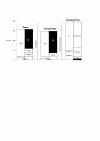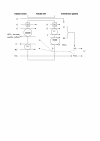Bench-to-bedside review: Chloride in critical illness
- PMID: 20663180
- PMCID: PMC2945073
- DOI: 10.1186/cc9052
Bench-to-bedside review: Chloride in critical illness
Abstract
Chloride is the principal anion in the extracellular fluid and is the second main contributor to plasma tonicity. Its concentration is frequently abnormal in intensive care unit patients, often as a consequence of fluid therapy. Yet chloride has received less attention than any other ion in the critical care literature. New insights into its physiological roles have emerged together with progress in understanding the structures and functions of chloride channels. In clinical practice, interest in a physicochemical approach to acid-base physiology has directed renewed attention to chloride as a major determinant of acid-base status. It has also indirectly helped to generate interest in other possible effects of disorders of chloraemia. The present review summarizes key aspects of chloride physiology, including its channels, as well as the clinical relevance of disorders of chloraemia. The paper also highlights current knowledge on the impact of different types of intravenous fluids on chloride concentration and the potential effects of such changes on organ physiology. Finally, the review examines the potential intensive care unit practice implications of a better understanding of chloride.
Figures


References
-
- Ganong WF. Review of Medical Physiology. 22. New York: McGraw Hill; 2005.
-
- Kellum JA. Acid-base physiology in the post-Copernican area. Curr Opin Crit Care. 1999;5:429–435. doi: 10.1097/00075198-199912000-00003. - DOI
-
- Cushing H. Concerning the poisonous effect of pure sodium chloride solutions upon nerve-muscle preparation. Am J Physiol. 1901;6:77–90.
-
- Odaira T. The influence of some neutral salt solutions, intravenously administered, on the reserve alkali of the blood. Tohoku J Exp Med. 1923;4:523–526. doi: 10.1620/tjem.4.523. - DOI
Publication types
MeSH terms
Substances
LinkOut - more resources
Full Text Sources
Other Literature Sources
Medical

